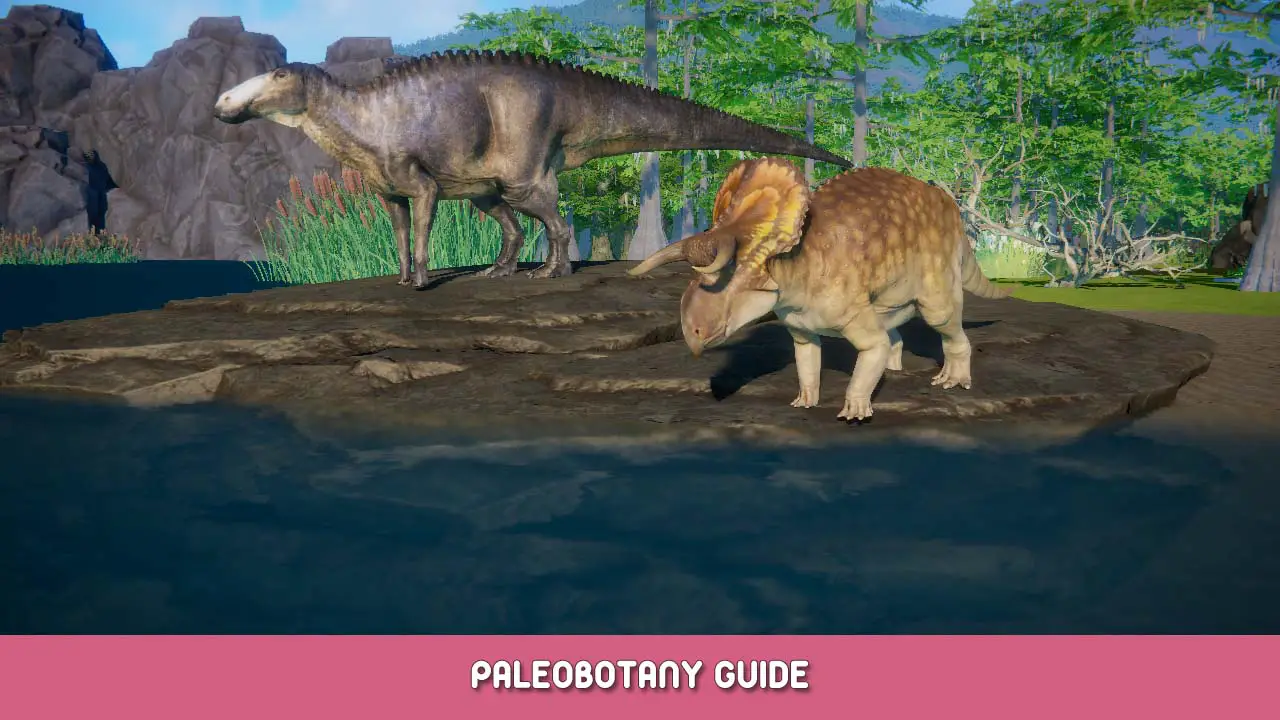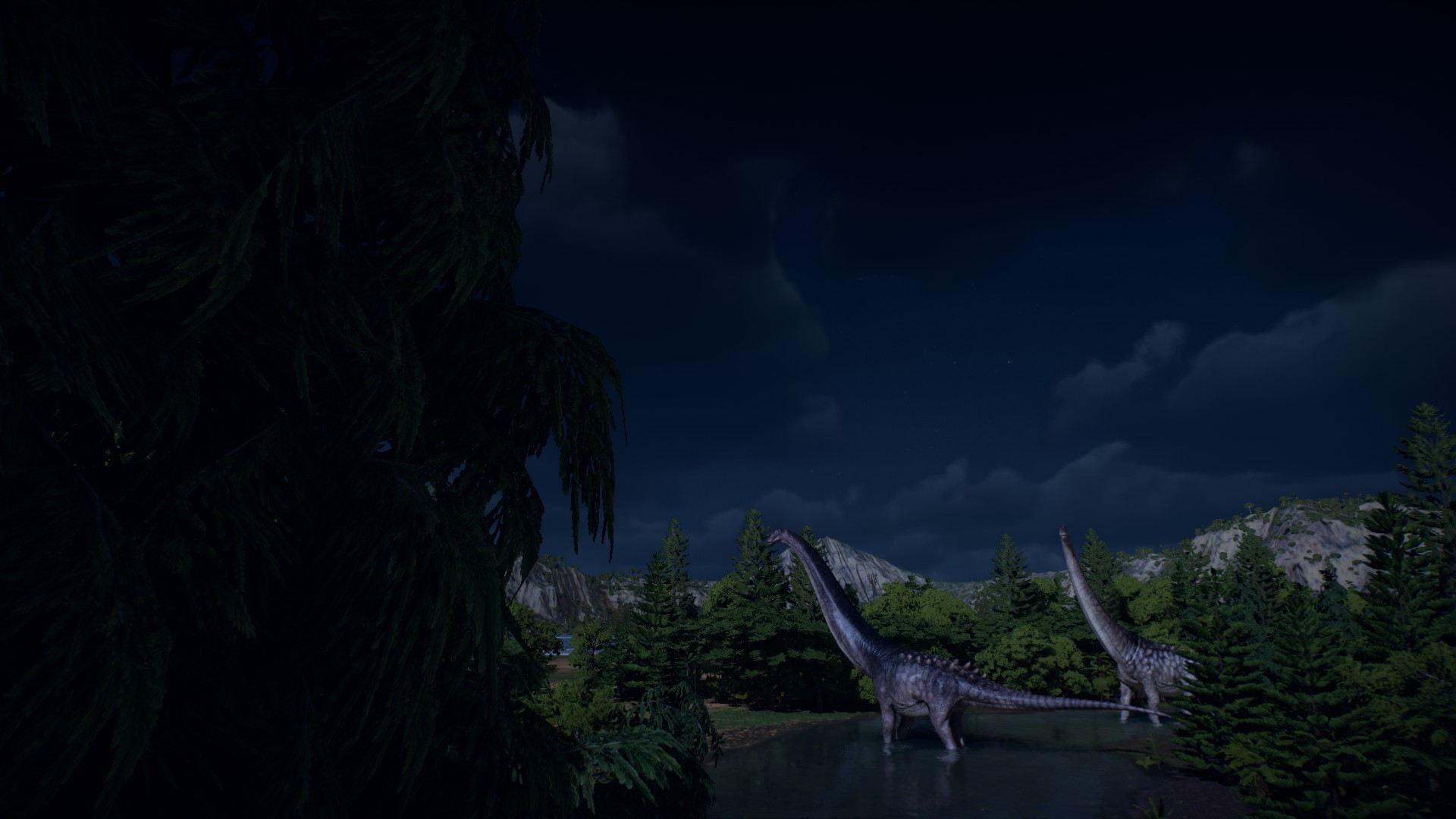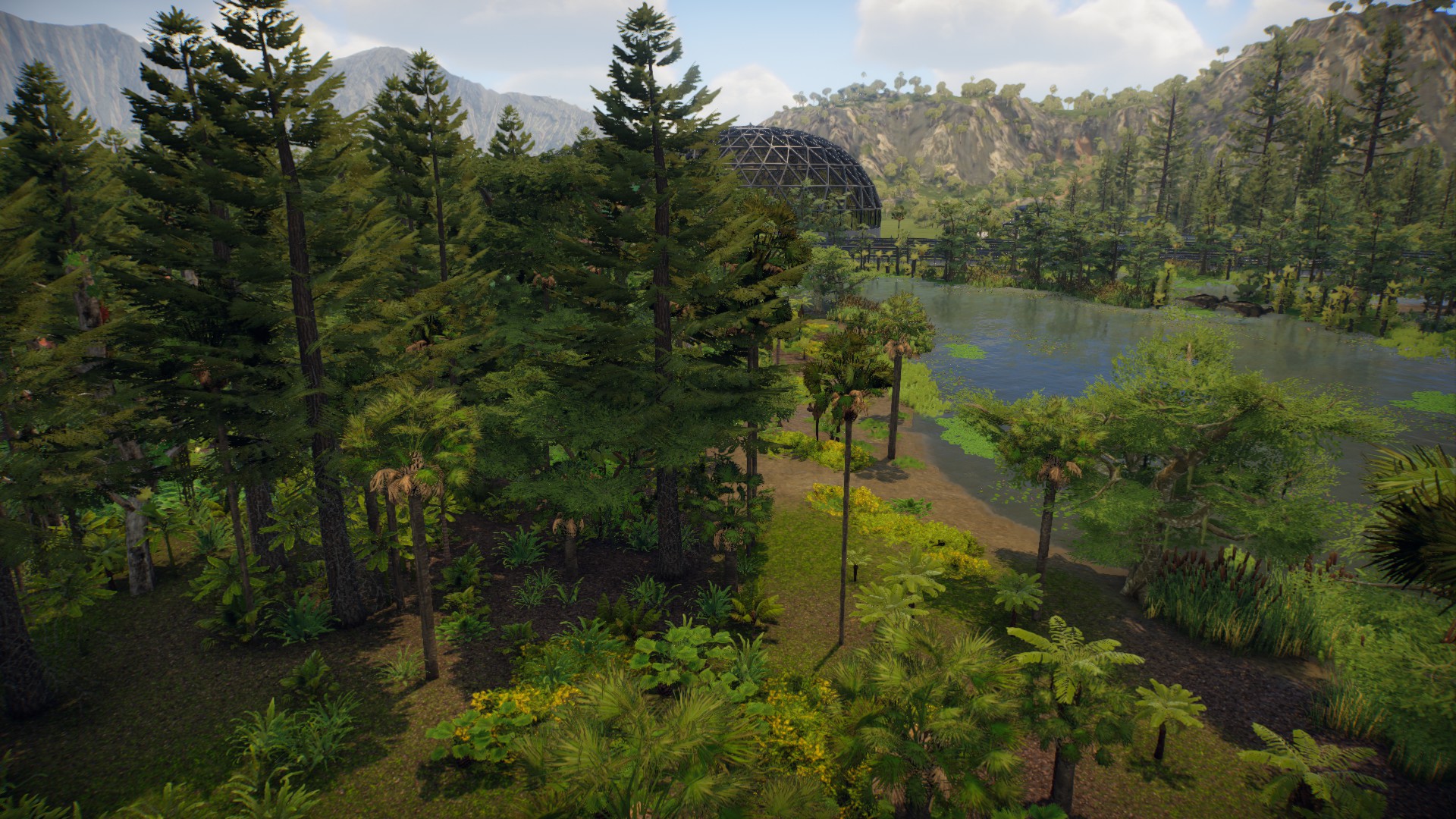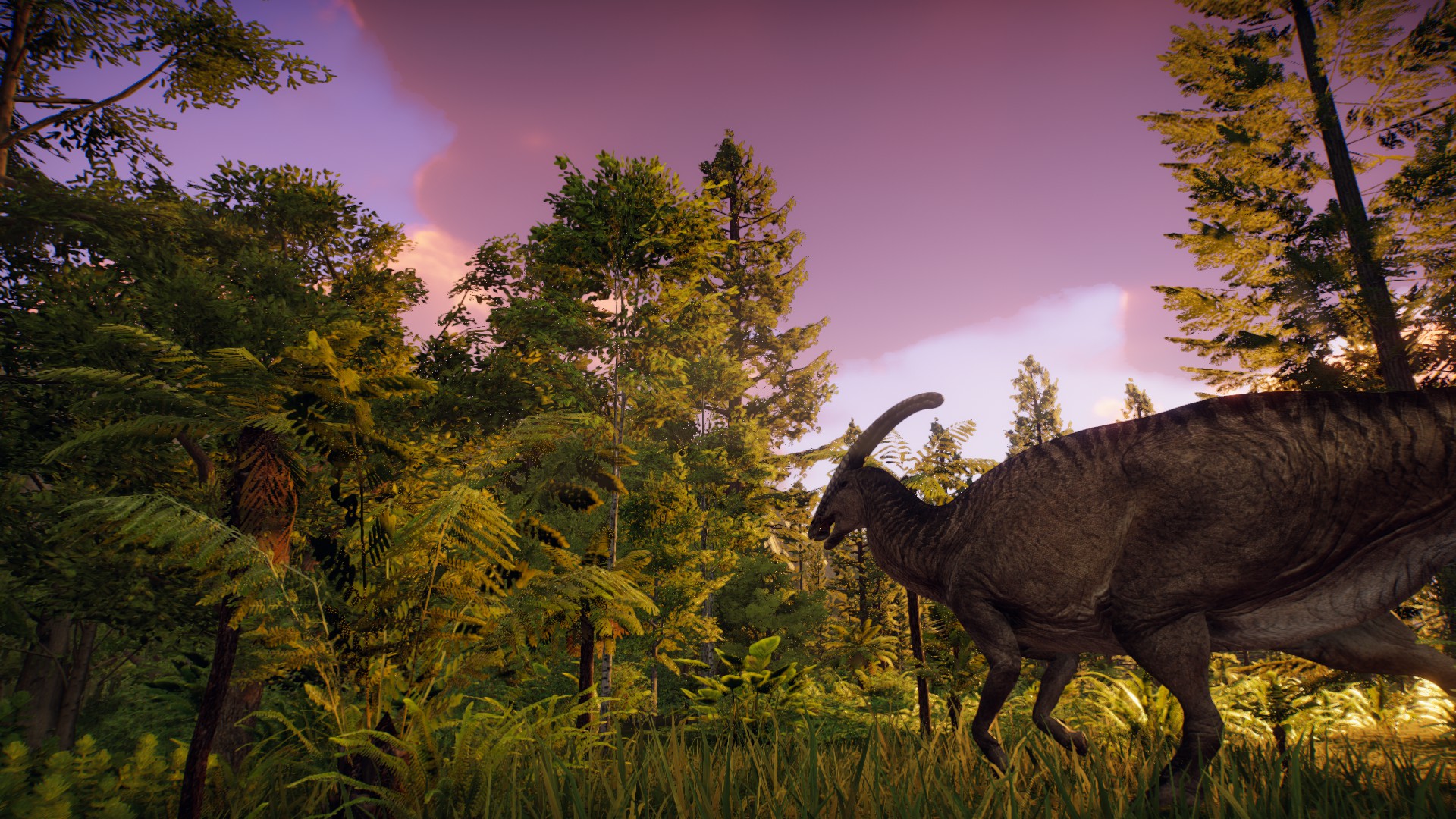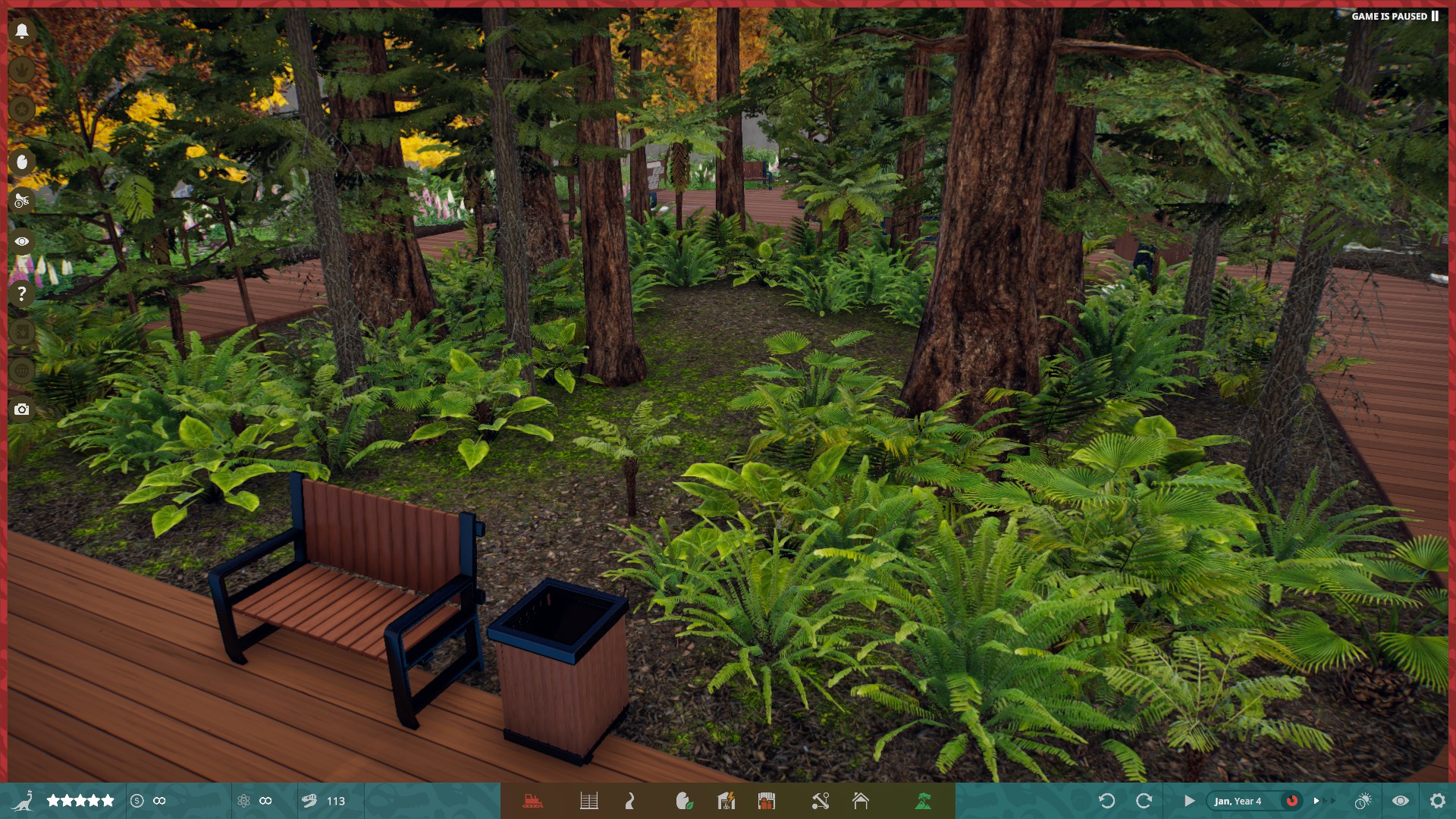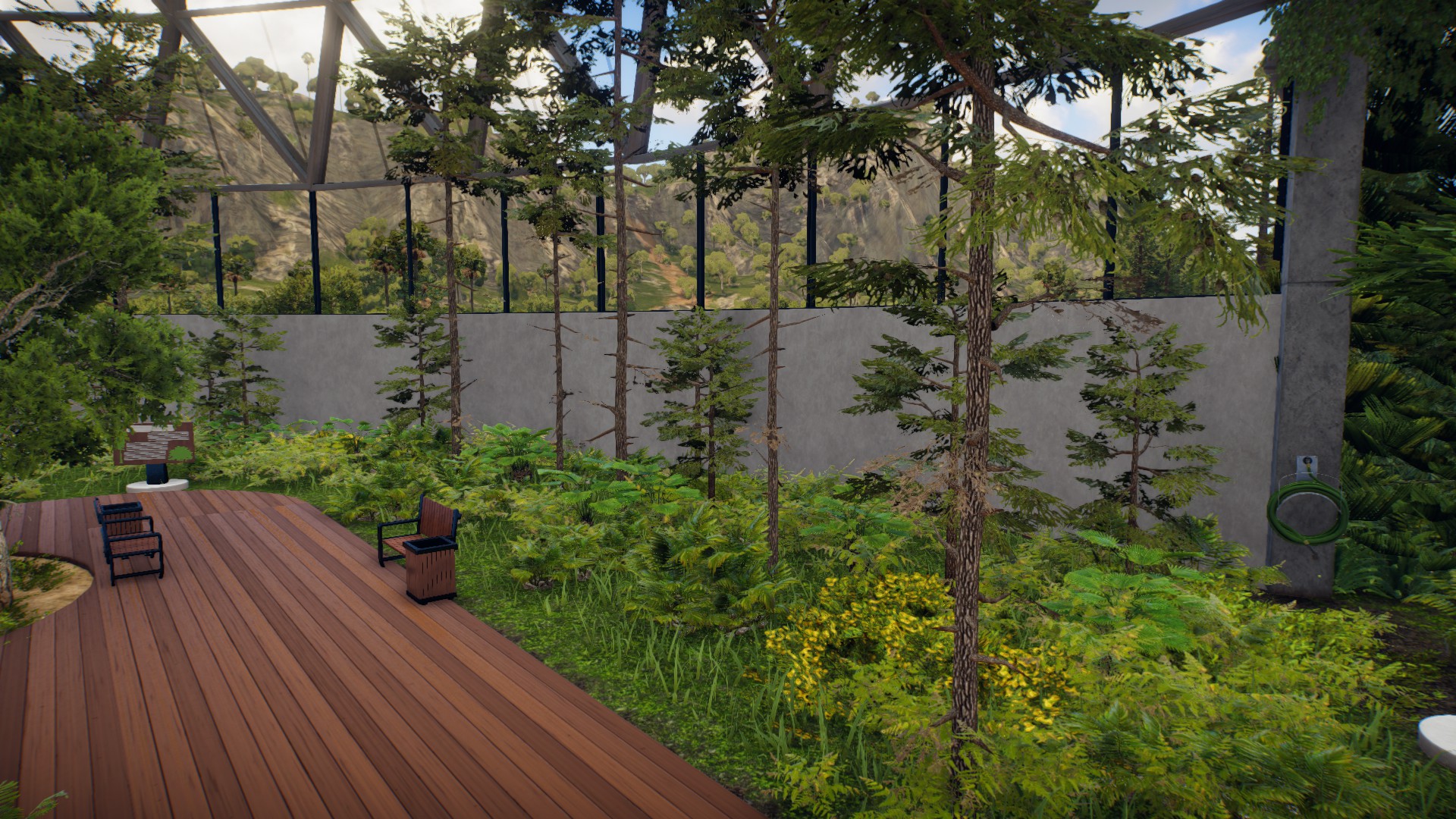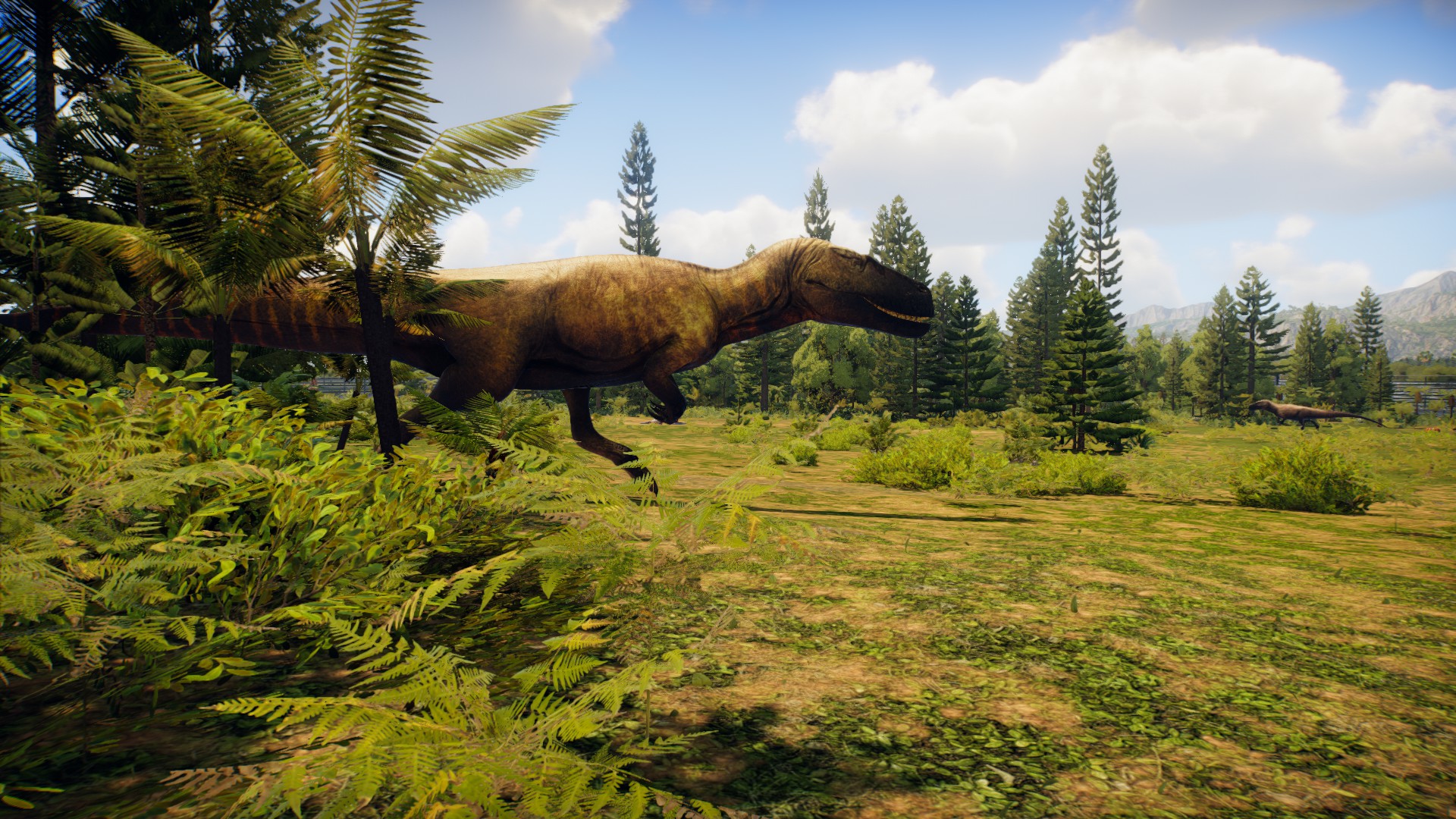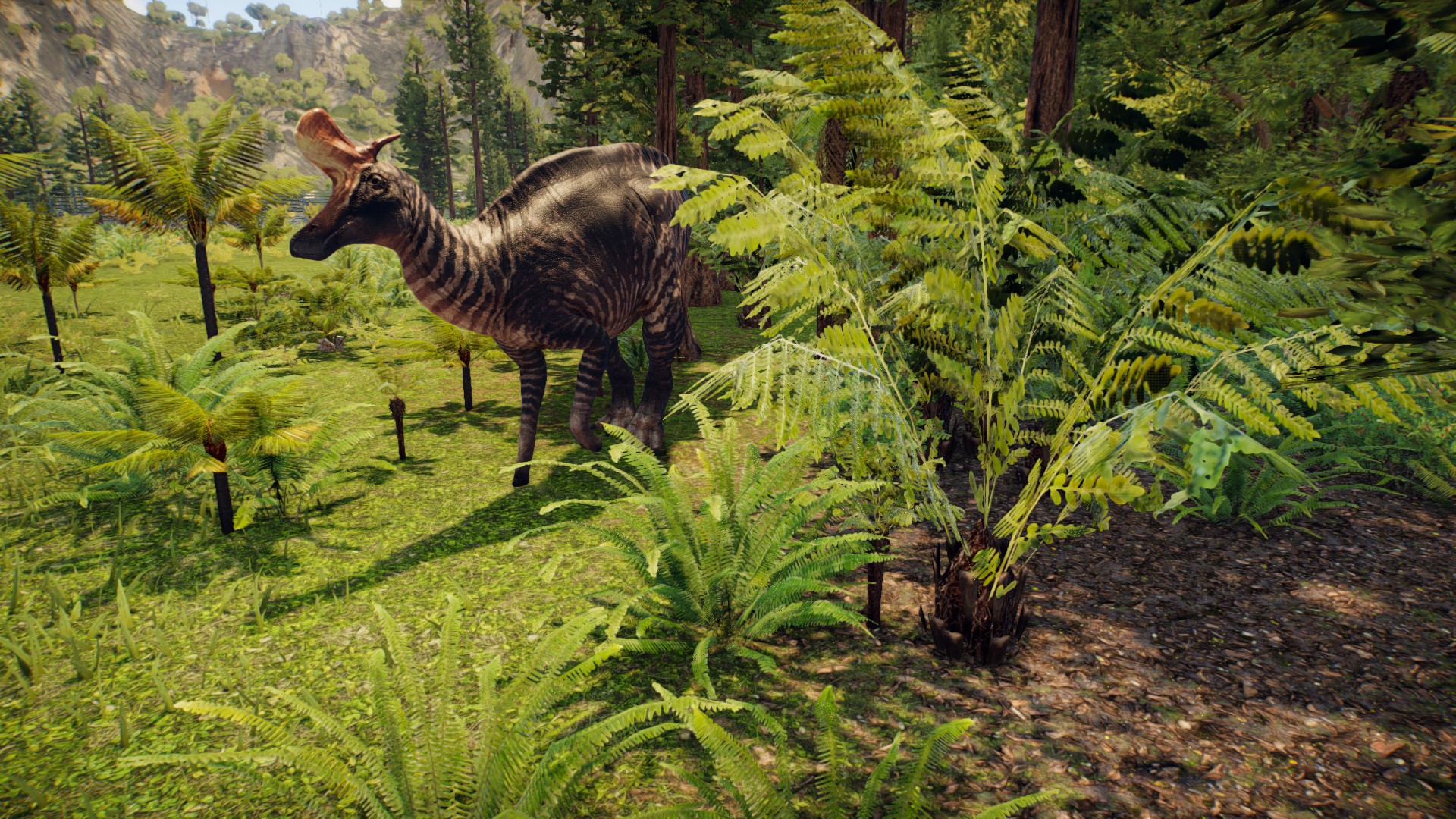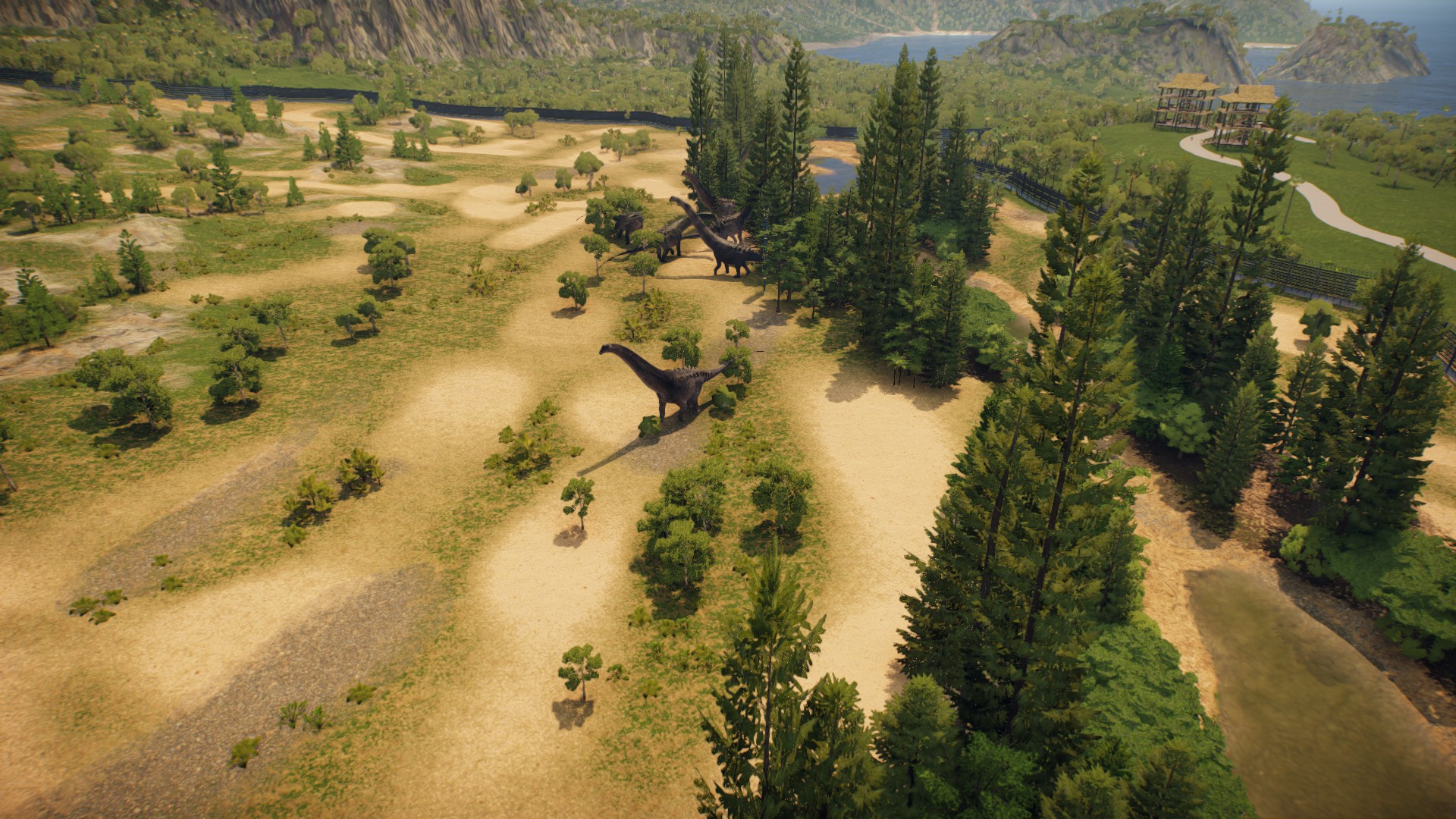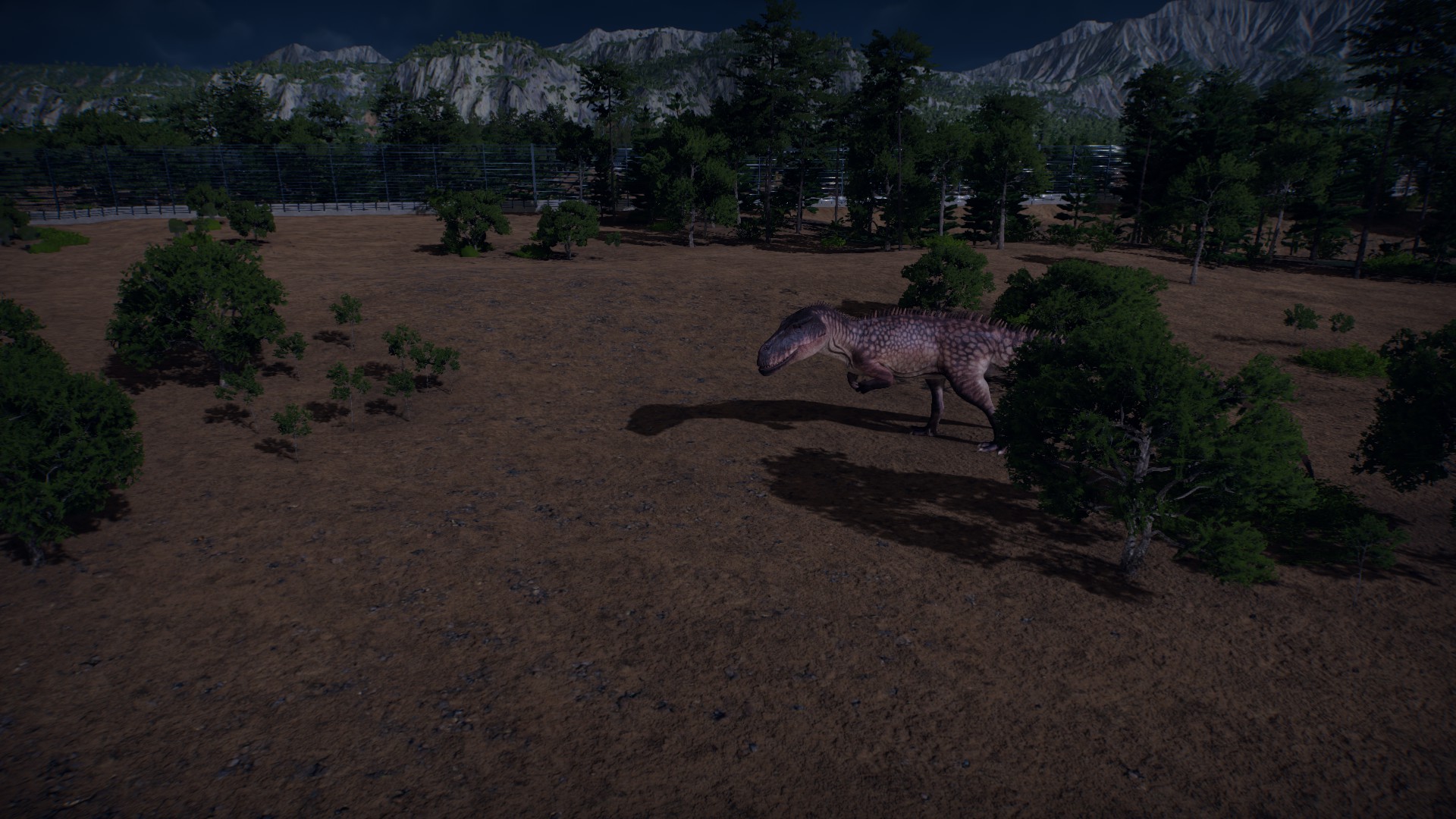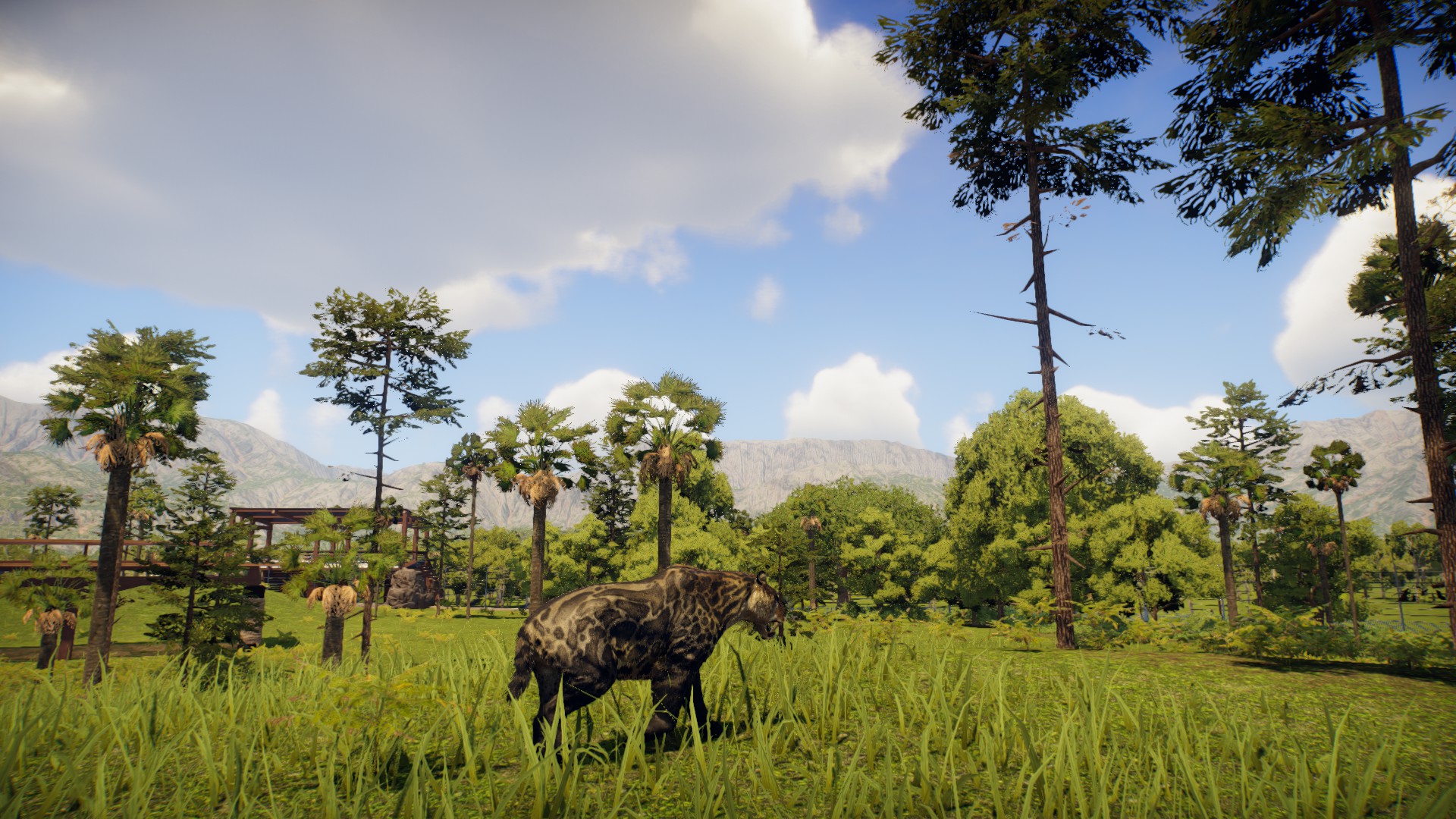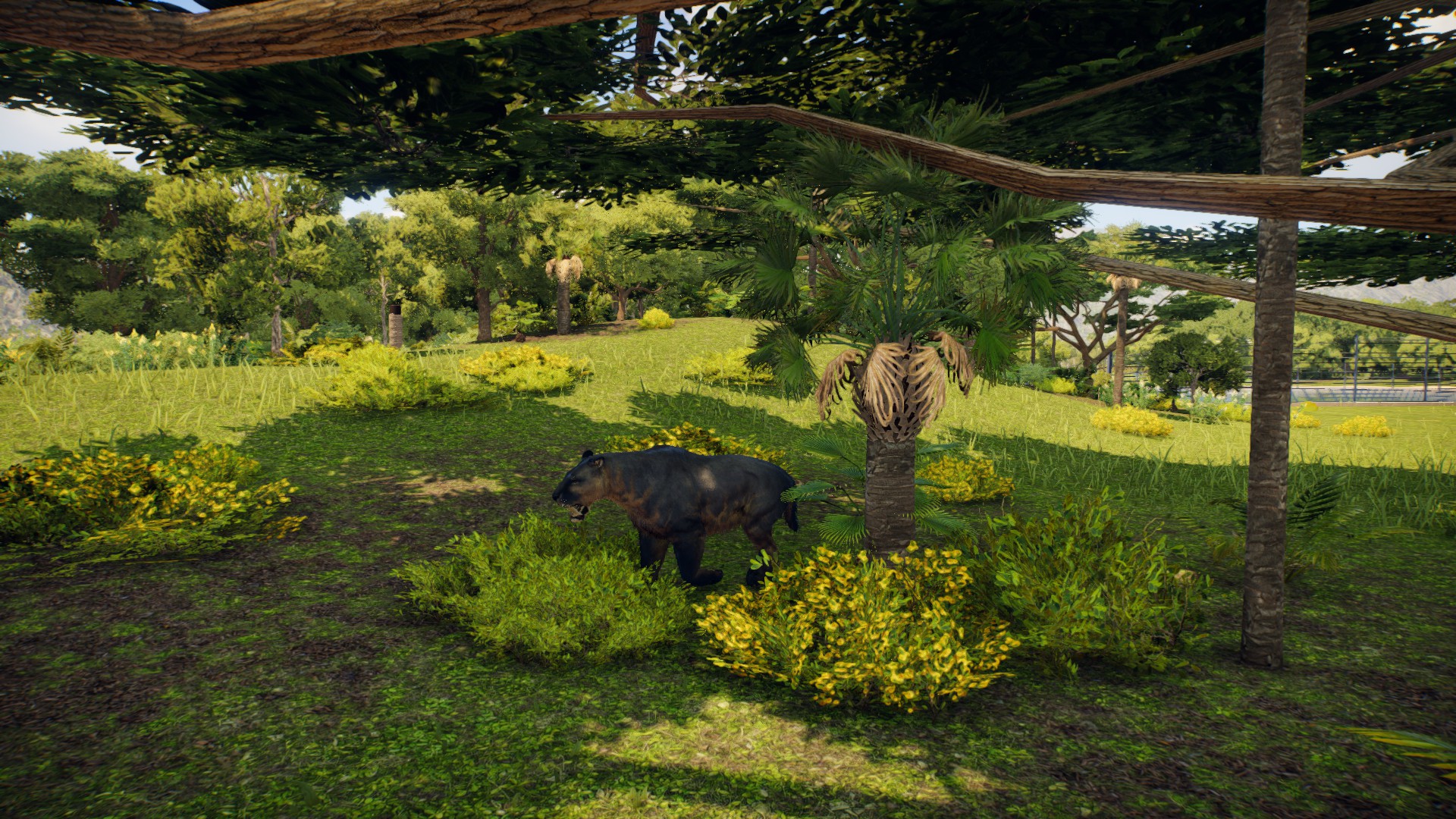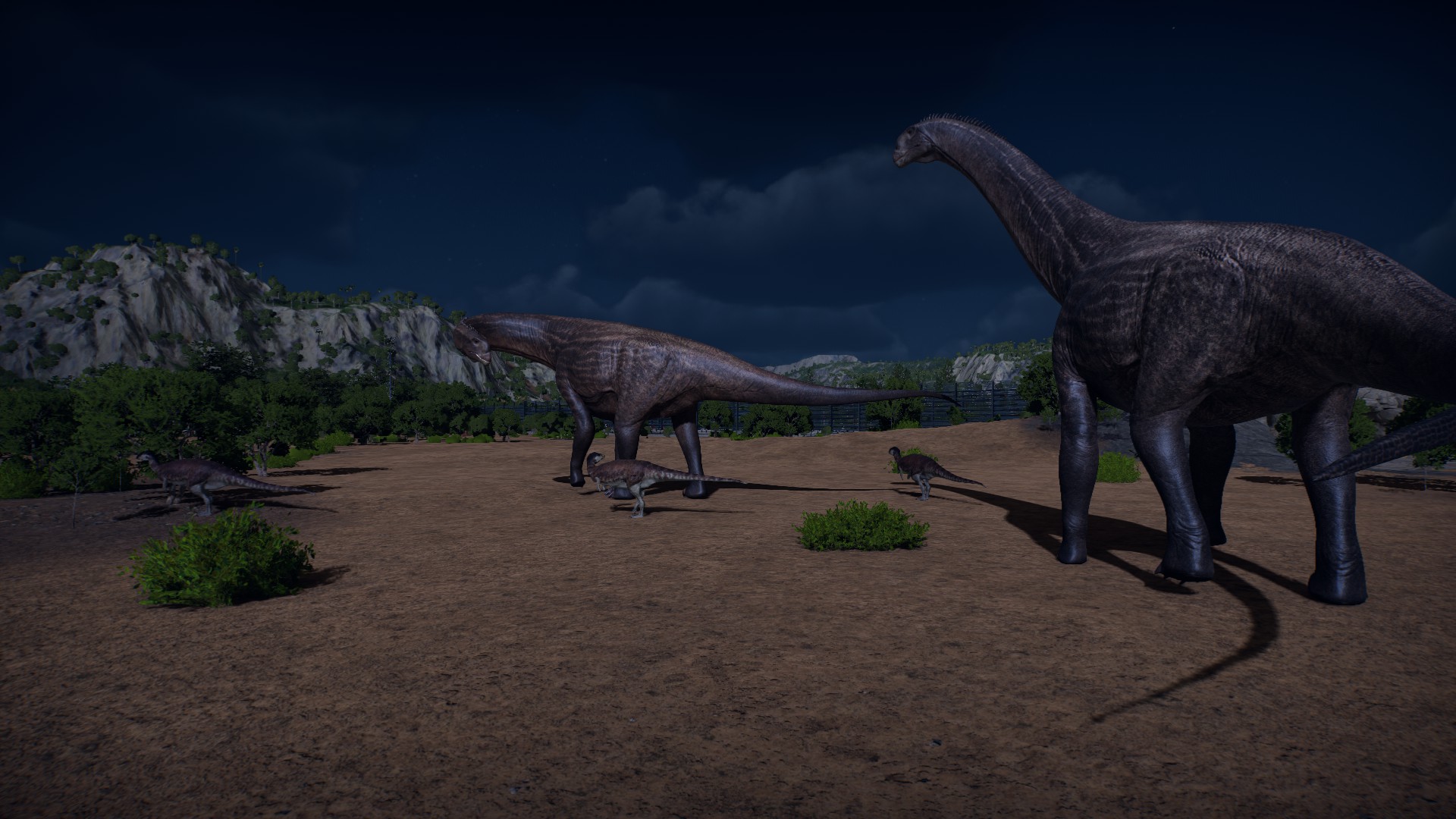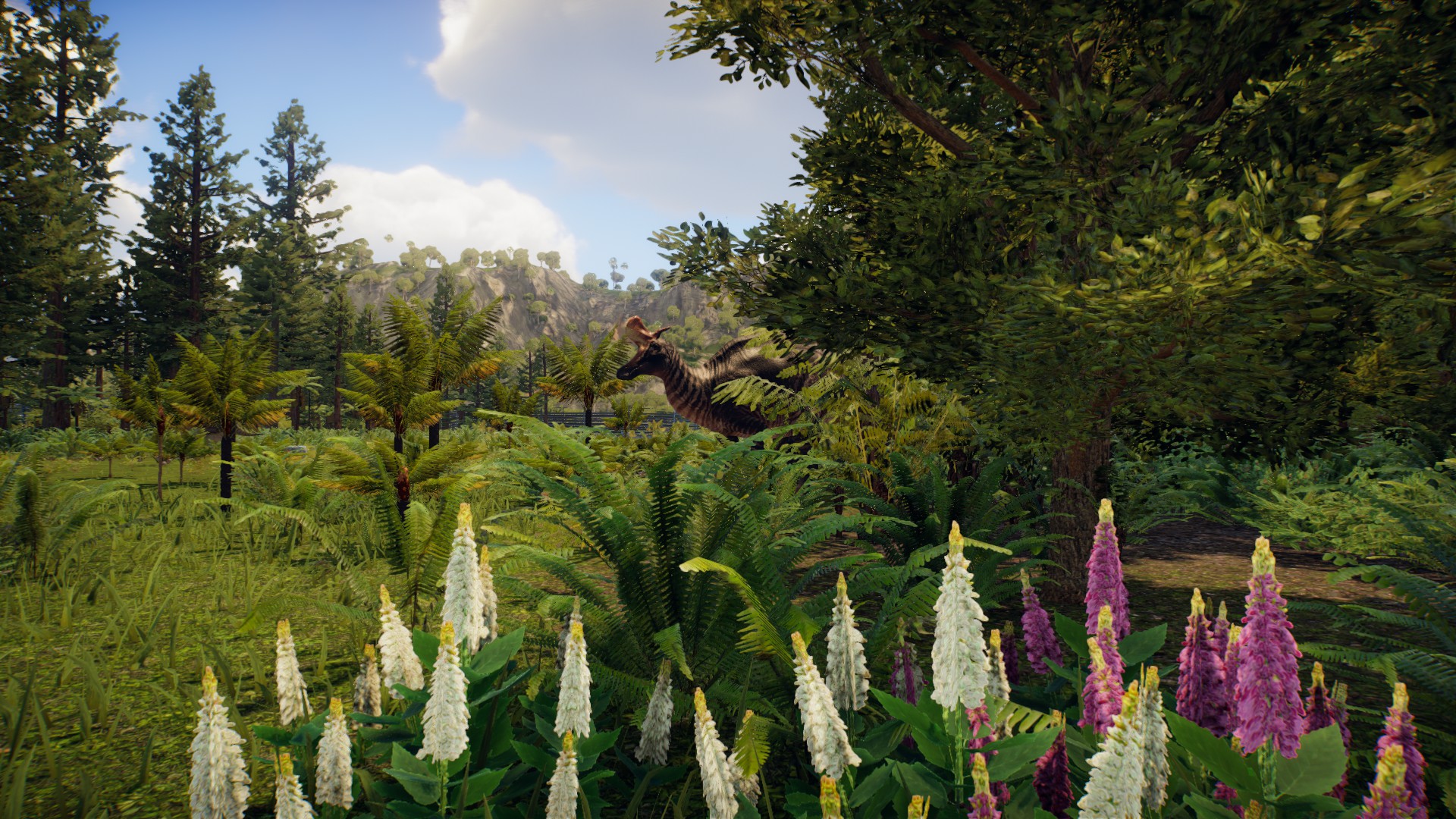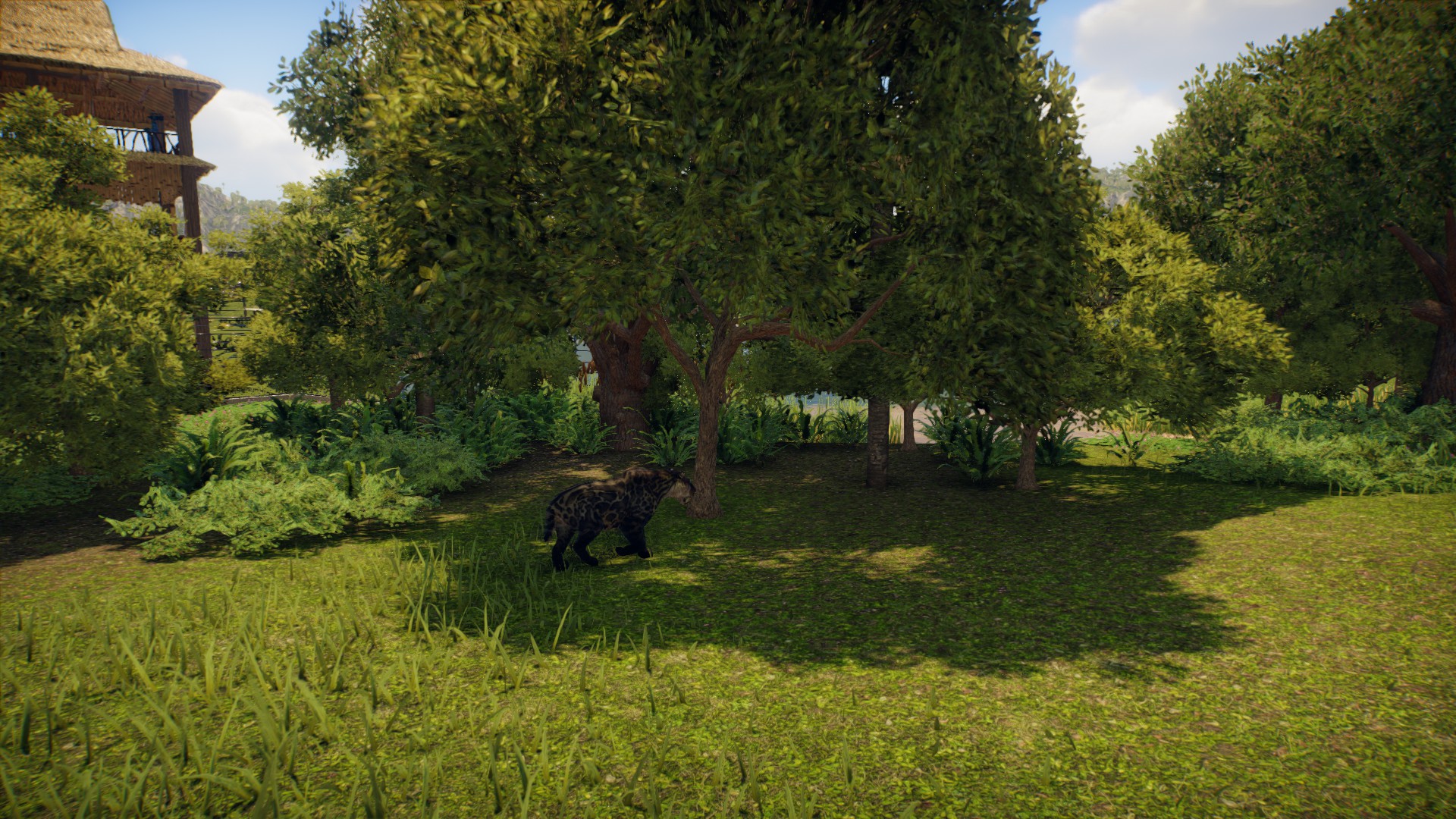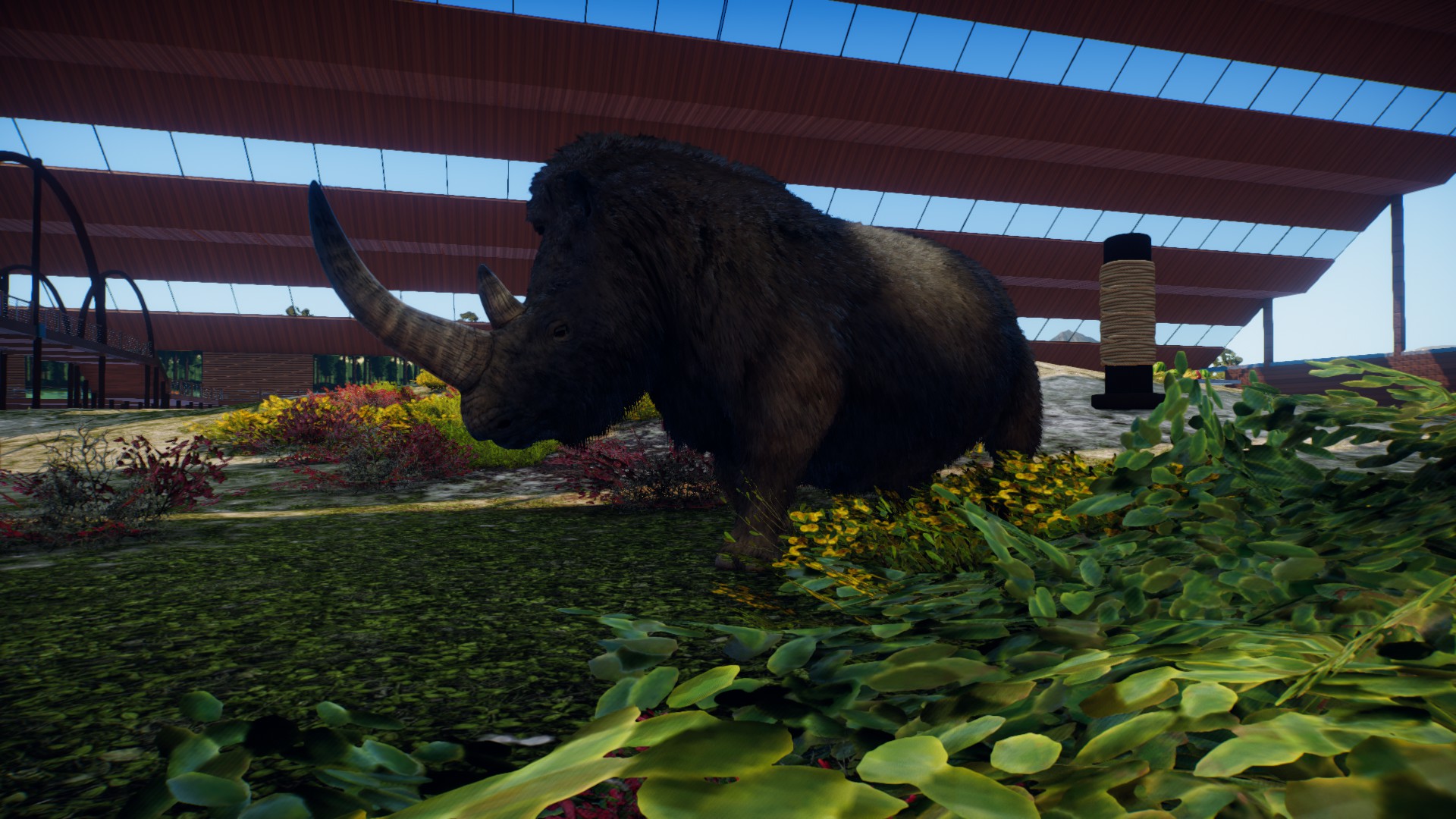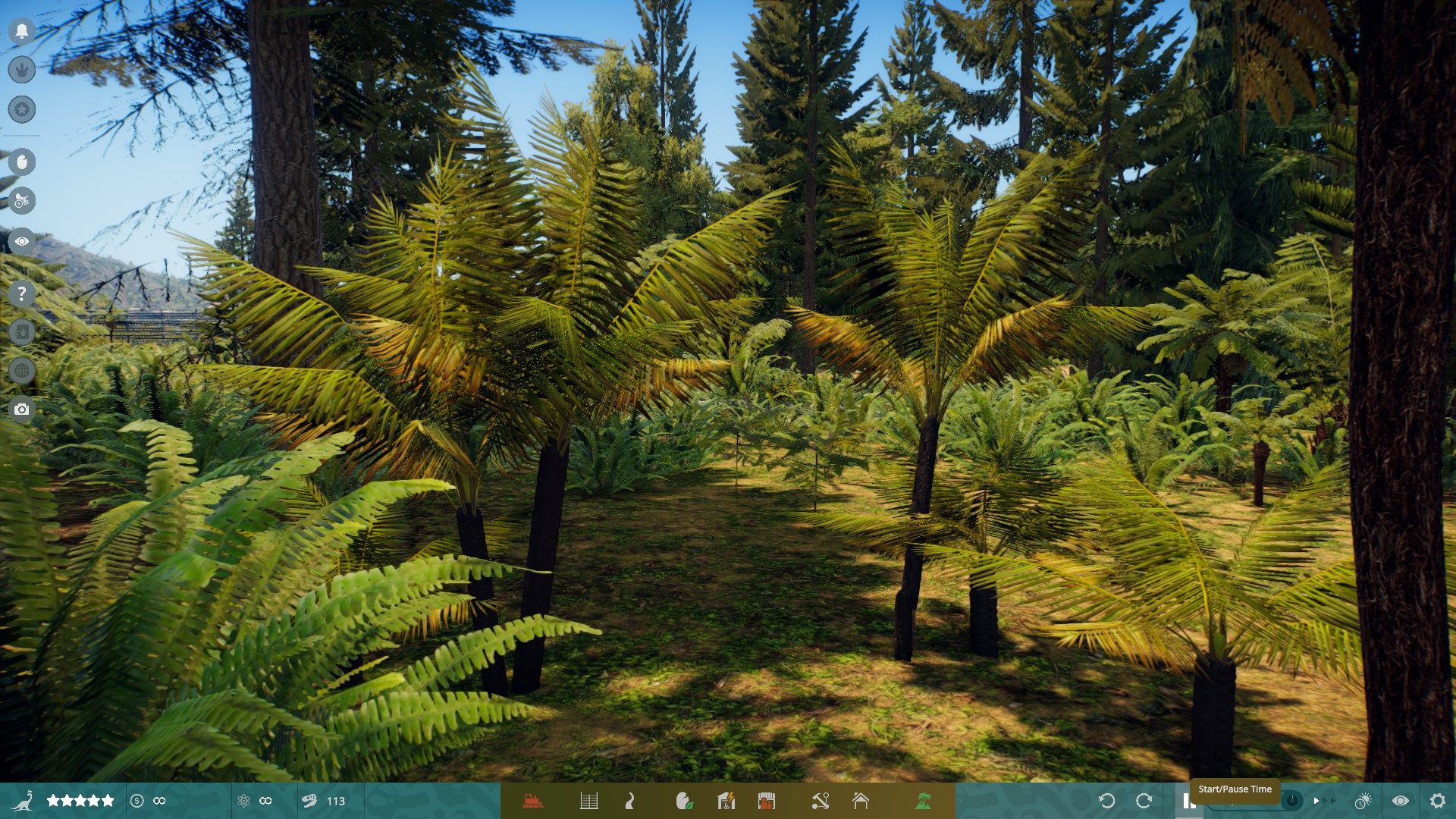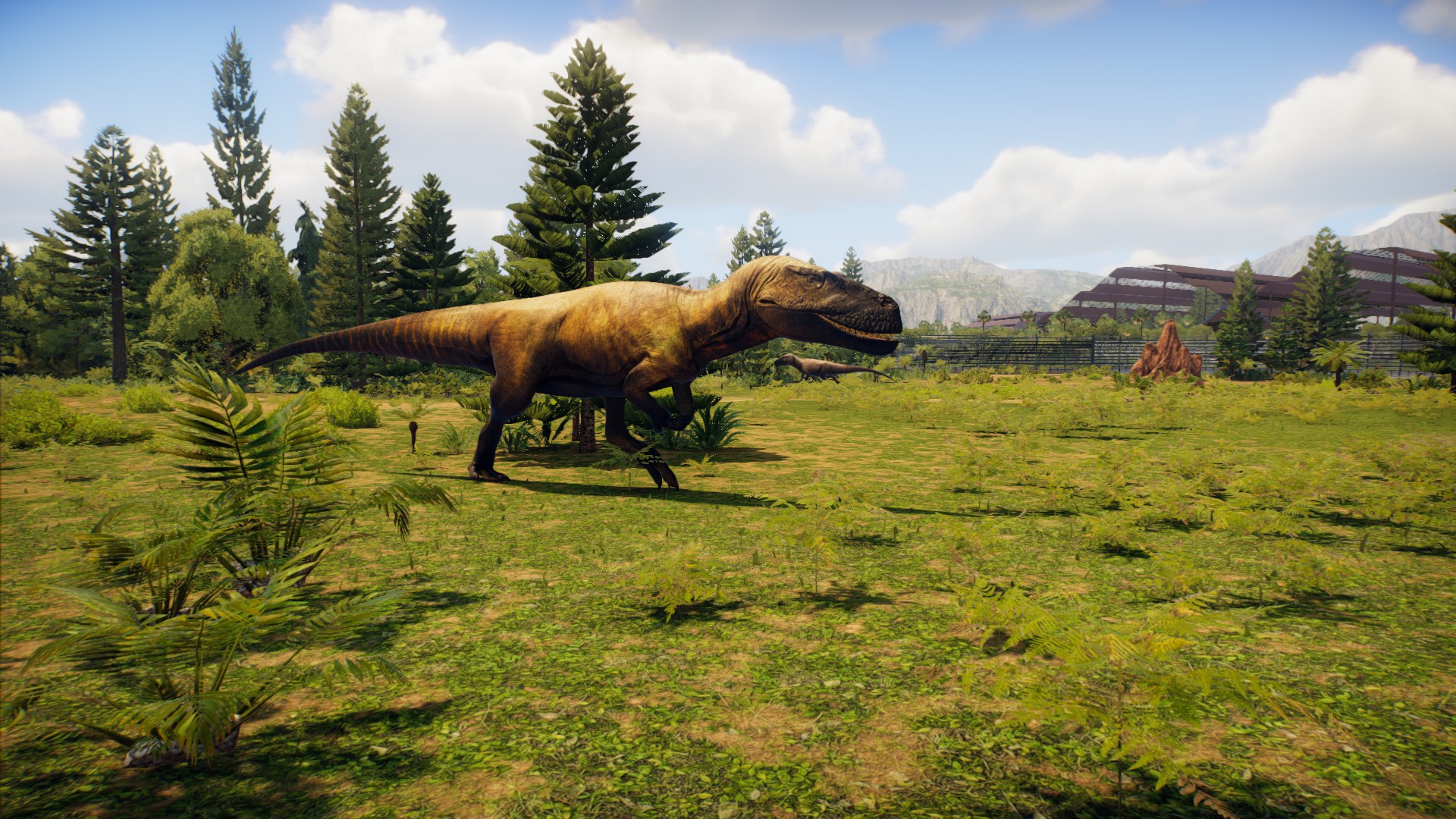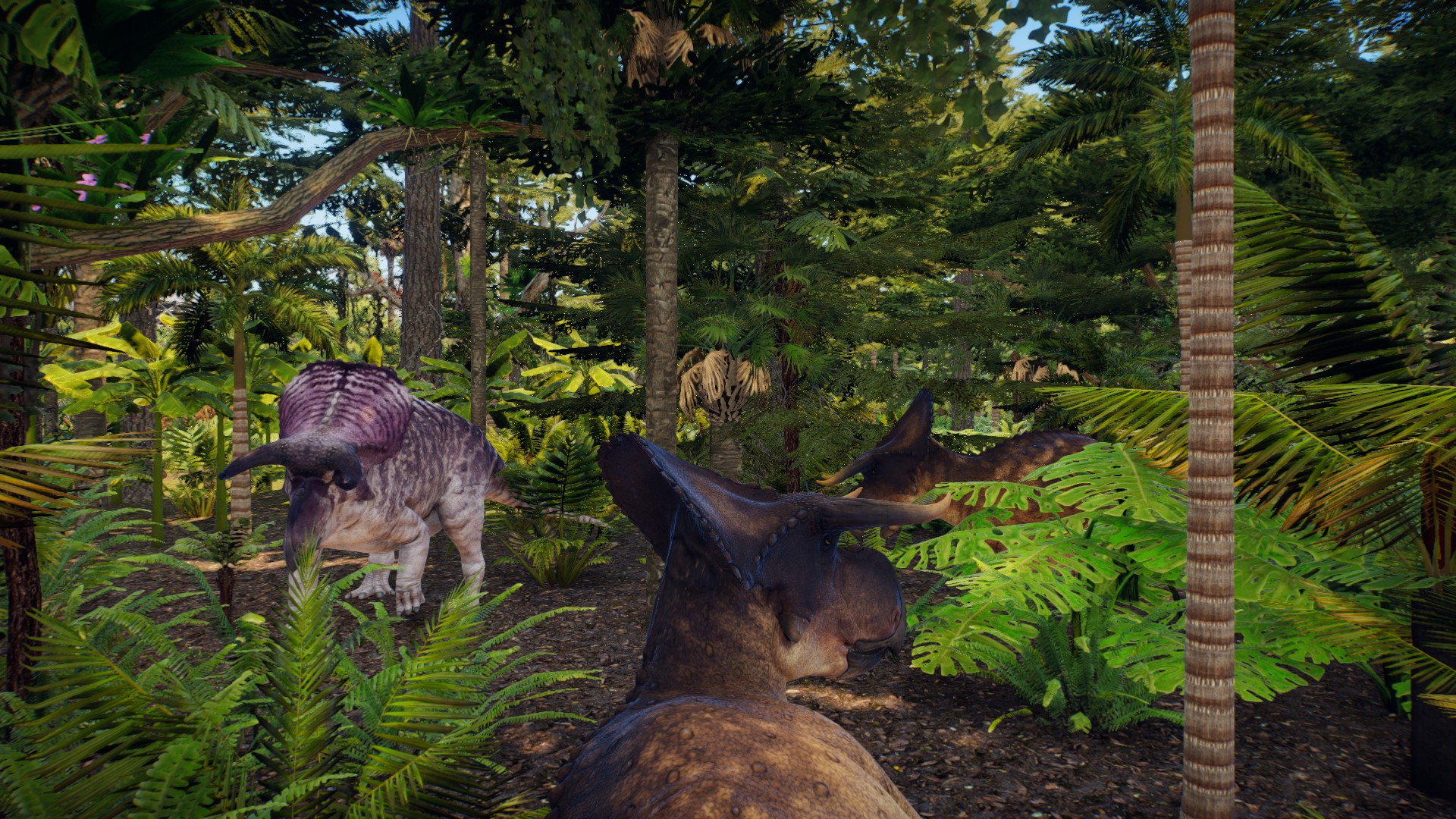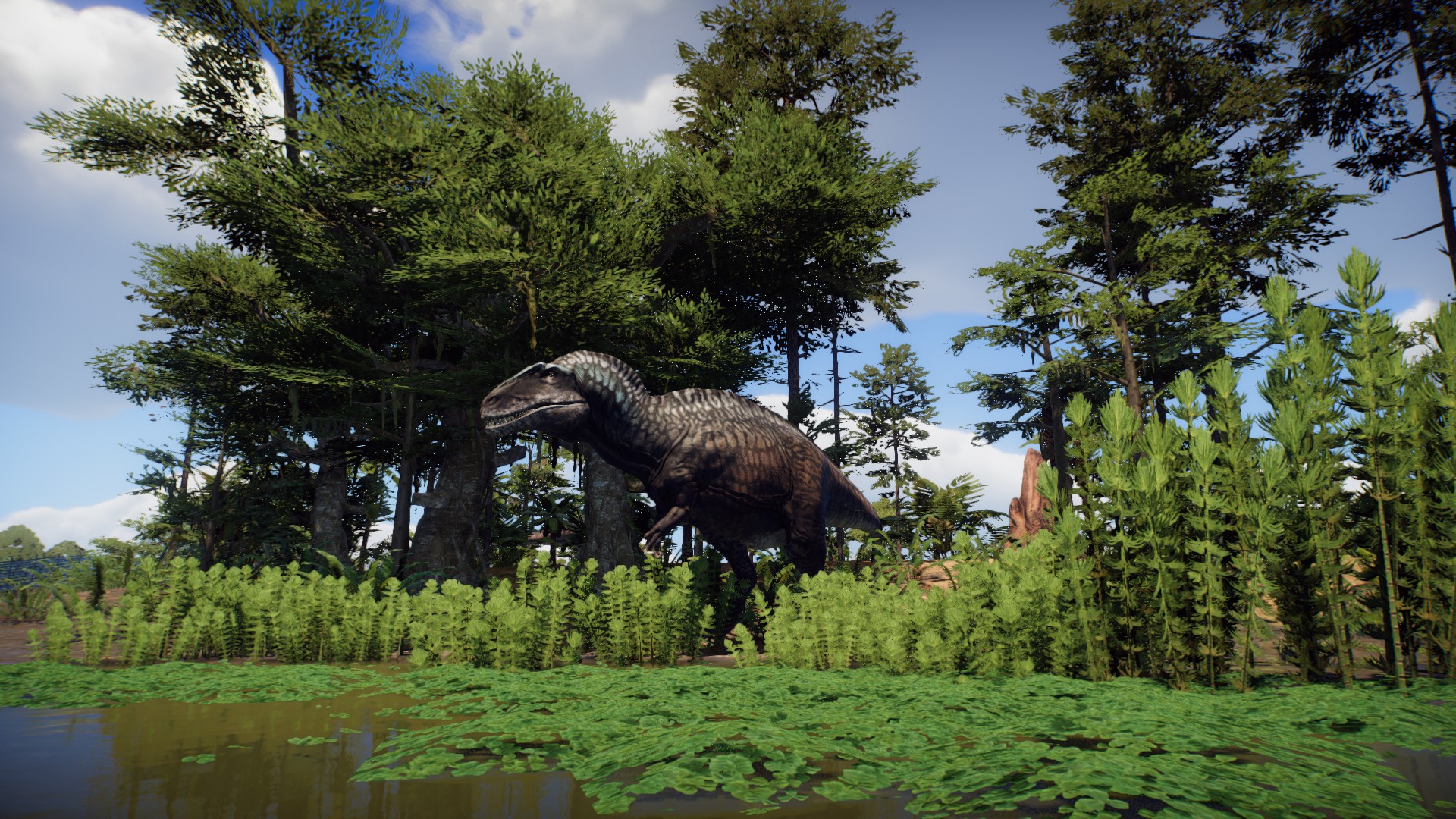A short guide to the foliage in game, in order to make paleontologically informed exhibits for your animals. Also a guide to some suitable in game plants to act as proxies as paleontolgically informed exhibits. This guide will also include the as yet unreleased desert plant range.
Boreal Trees
Alaskan Yellow Cedar: This tree is perfectly suitable for the Late Plestiocene animals of the mammoth steppe. Although as the mammoth steppe was dominated by low herbacous plants(basically herbs and flowers) I’d recomend trees be used sparingly.
An appropriate proxy for certain tropical-temperate weeping species of dacrydium, a family Podocarpus – the family of fruiting conifers that date back to the Triassic. Or for certain species of tropical weeping Cypresses, which evolved during middle to late jurassic. The tree should be widened out to represent a weeping Podocarp or Cypress from an area that does not experience large amounts of snowfall.
Alpine Bear Berry: Suitable for late Plestiocene animals of the mammoth steppe, the flatter forms are the most suitable for the steppe itself, the taller bush is more suitable around the trees, perhaps in thickets, or down by a source of water.
Alpine Current: Suitable for late Plestiocene animals of the mammoth steppe, the flatter forms are the most suitable for the steppe itself, the taller bush is more suitable around the trees, perhaps in thickets, or down by a source of water. Also suitable for cold temperate forests similar to that of Vancouver Island, BC Canada, – An enviroment roughly analogous to the Prince Creek formation(although inland areas, further north may have been more exposed and colder)
Douglas Fir: This tree is perfectly suitable for the Late Plestiocene animals of the mammoth steppe. Although as the mammoth steppe was dominated by low herbacous plants(basically herbs and flowers) I’d recomend trees be used sparingly.
An appropriate proxy for many or really any species of large Pine or Cypress trees. Upsize the trees to dominate the forest and they will be suitable for all well watered forests from the Triassic to the modern day. As useful for the gallery forests of the jurassic, as it is as the emergent trees of the conifer dominated jungle of the Kapowitz Formation, the cold temperate conifer forest of the Prince Creek formation. The tree should in contexts without high snow fall, be widened out to give it a much wider canopy.
Totally not Costal Trees
Sequoia: Redwoods and their relatives date back to approximately the middle of the Jurassic, and sequoia fossils have been found as far south as Australia during the middle of the Cretaceous. entonces si, these trees are appropriate for your rain soaked mountains or gallery forests(the thick forests that line the banks of rivers). Definitely upsize these trees, twice or even three times the size to make true giants of the forest.
Scot’s pine: Very suitable for drier or fire effected open forest and areas and more exposed poisitions in conifer forests. Pines are quite fire resistant for conifers. Similar pine trees(particularly the caribean pine and long leafed pine) form savannas, scrub and forests as part of fire resistant comunitites in the modern day, especially in Florida, the Bahamas and Southern USA and fossils and charcoal indicates that they lived in very similar enviroments. These are suitable for thickets on the open plains of the morrison formation, and of course the Hell creek formation.
Sword fern: Very suitable plant for sheltered and moist areas. Tropical relatives are surprisingly hardy in humid conditions. Grows well in swamps, forest edges, within the forest. In rainforests these plants will grow on the trunks and branches of other trees.
Scot’s pine itself grows in costal conditions in the dry conditions of the mediterrainian; although their growth form is distinct and is not represented here. The planet zoo is this growth form.
Braken: An extremely hardy plant suitable for all mesozoic habitats. Capable of dying off to the underground roots during the hard times this plant grows all around the world. We have fern leaves with similar features coming from the jurassic. Particularly in association with the dry flood plains of the morrison formation. These plants thrive in fire effected comunities in the modern day, and pair well with the scots pine to represent a fire effected open forest/savanna enviroment, throw in fan palms and you have modern Florida, or the Hell creek/Lance formation, throw in some cycad proxies such as the upcoming date palms and the tropical palm seedling and you have the dry and seasonal plains of the morrison.
Treefern: Absolutely everywhere in the mesozoic. Treeferns are fire hardy and will recover quickly after burning. There are some seemingly drought hardy species from the mesozoic, so seasonally dry plains are a possible habitat.
The treefern makes a suitable proxy for Marattian ferns, or king ferns enlarge the plant and bury the trunk under the ground. King ferns inhabit modern south Asia and Australia, quite widespread in the mesozoic with pollen being found across the globe in all periods of the mesozoic.
Scrubland
Norfolk Pine: A legitimate costal plant! It’s small and only immature trees are represented. A neat tree but adult trees look much different to the immature tree, so upsizing them can only go so far. The only member of the aracarian conifers. Aracaria generally can’t handle fire. They will thrive in dry and seasonal conditions even in well draining soils. We have fossils of similar plants in the late triassic. A suitable plant for dryland thickets and forests alike, although these trees are way too small to break through a forest canopy and dominate a forest, the way many aracaria species do to this day.
Aleppo Pine: The perfect pine for arid and hot conditions, perfect for scrubland and desert conditons from the Permian till the modern day.
Sabal Palmetto: Suitable for tropical and sub tropical late campanian formations such as the Kapowitz, the much later late Maastrchian formations like Hell creek, definetly suitable for all species of smilodon.
Foxtail Palm: A distinct plant with a limited range in real life. It stands out, so until they bring in Australian megafauna it’s going to stick out to pedantic plant folk like myself.
Italian Sunflower: Gloriously ambiguous. The model of this plant can be used for scrubland, mammoth steppe (again keep the taller plants off the steppe itself) the plant looks ambiguous enough without the flowers to be similar to some modern and bizzare low growing conifers, particularly in poor soils. Could be a suitable for mesozic desert enviroments.
Temperate trees
Field Elm: Basically suitable for most standard tree shaped trees of all periods, canopy is suitable for tropical trees. Can be proxied as ginkgos so far so suitable for most enviroments, when put in forested enviroments.
Holm Oak: Suitable for temperate and subtropical forests throughout the time after the end of the Cretaceous. The pressence of acorns really limits your options here.
Paper Birch: A suitable tree for temperate northern hemisphere forests from the late Cretaceous onwards.
Arrowwood: A very suitable shrub and ground cover for forests from the middle of the Cretaceous onwards. Looks like a run of the mill angiosperm shrub. Its good.
Trébol: A suitable ground cover for moist forests from the middle of the cretaceous onwards.
Version without the flowers can be floated on top of the water to proxy as Marslles ferns, a form of aquatic fern that looks like a clover but grows like a lilly pad. Australian species thrive in desert conditions, able to sprout up and reproduce whilst water is present and stay in the ground for decades between rains.
Tropical Trees
Costal treesCoco: The quintessential beach tree came about after the end of the mesozic. Until we get some tropical cenozoic animals it’s of limited utility for palentolgically inspired enviroments. Although the small tree can have dark rocks placed over it’s stem to make the plant into a cycad similar to the Triassic Leptocycas Cuban Microcycas or Australian cycas armtrongii.
Scavola: Despite being almost exclusively a costal plant this can proxy as more typical rainforest plants and ground covers, from the middle of the cretaceous onwards.
Elephant ear: This plant’s family has it’s origins being present in the late Campanian, and the tropical rainforests of the kapowitz formation is a suitable environment for it.
Fan Palm: As suitable for under the forest canopy as it is for more wide open areas. Use it liberally in tropical and subtropical Campanian and Maastichthan and Pleistiocene habitats.
Kapok: Suitable for more modern tropical enviroments, even by the late Maastichian most habitats were still dominated by large conifers.
Palm Seedling: As suitable for under the forest canopy as it is for more wide open areas. Use it liberally in tropical and subtropical Campanian and Maastichthan and Pleistiocene habitats.
Also able to be used to proxy as Zamia like cycads, low growning and drought hardy cycads that are suitable again, for under the forest canopy or in more open and drier areas. I’ve added cylinders of pebbles that will look like seeds from a distance.
Samanea: Suitable to fill in for early angiosperms of the midd cretaceous such as primitive laurels or rosid trees etc. These trees started appearing in riverside forests and other rather moist areas and only seemed to spread into drier niches towards the end of the Maastichian.
Banano: Not really a great proxy, although it may have been present by the late cretaceous and thus is suitable for the Kapowitz formation
Humedales
Bald Cypress: Present during the later stages of the cretaceous, this tree is also suitable to proxy as it’s more land loving relatives, just sink the plant into the ground to obscure any protruding roots.
Swamp Beech: Suitable for representing early angiosperm trees from the middle of the cretaceous onwards such as laurels etc. Suitable for swamps and also riverside forests etc.
Reeds and catails paparyus: Present by the the start of the Campainian, so pretty appropriate for all your big charismatic late Cretaceous dinosaurs.
Horsetails: Suitable for wetland areas during the mesozoic and through to the modern day. Can be upsized substantially to represent giant species.
Lilly pads: Suitable for the wetlands of the early Cretaceous onward.
Water hycanthe and Arrow Arum: Their relatives are present in the tropical jungle of the kapowitz formation and are suitable for repesenting aquatic and land plants in many tropical settings.
Amazonian Lillypad: Very distinct plant, of limited utility for scientific accuracy.
Desierto
Blood Wood: A suitable proxy for aridland and scrubland angiosperms from the eocene onwards. A good counterpoint to the aleppo pine.
Sagaro, Pricklypear, barrel cacti: Useful for desert scenes of the cenozoic.
Yucca: Perhaps can be sunken into the ground to act as a bennitatles, a family of bizzare flowering cycad thing from the early jurassic onwards.
Saxaul: Looks suitable as a stunted desert plant of many stripes, including chleporid conifers, a family of arid adapted cypress like plants that were fire resistant and very common in dry or salty enviroments in the mesozic.
Shorter forms could seemingly proxy as ephedras a short grasslike plant from the late triassic to modern day.
Joshua tree: Useful for desert scenes of the cenozoic USA.
Date Palm: Suitable to proxy as many types of cycad similar to modern species of cycas, encephlaphantos (from Africa) and Macrozamia from Australia, these trees will often grow in groves in tropical and subtropical enviroments, in semi arid and seasonal enviroments and also in more well watered enviroments.
Formation Guide
Late Jurassic Formations
Morrison Formation:
A vast basin, bordered from the North by a retreating seaway, to the west by the volcanic front range, a mountain range which absorbs much of the rain destined to the Morrision Basin. To the North the region is more forested and humid supporting forests of huge conifers, and peatlands, and to the south it is much more arid, giving way to conifer scrub and desert, with a trend towards more aridification through time. Forests of conifers, ferns, cycads, treeferns , clubmosses and ginkgos are supported by the rivers that flow across the Morrision flood plain or underneath it; ground water supplies wetlands and swamps, oasis on the dry and unforgiving flood plain. During the short rainy season the floodplains are covered for a short time in verdant swathes of ferns, cycads and clubmosses. Fires on the flood plain seem limited in scope and reasonably rare. Little charcoal is known from the formation.
The Morrision is a patchwork of baking flood plain, dense forest, and both temporary and permanent wetlands.
Torvosaurus tanneri
Brachiosaurus
Camarasaurus
Dryosaurus
Altmühltal Formation(also known as Solnhofen Limestone):
A hot and seasonal island, with low drought hardy vegitation, such as cycads and conifers bordered by reefs and an extremely saline lagoon. Arqueoptérix
Early Cretaceous Formations
Wessex Formation : A seasonal flood plain that sees regular fires. The first flowering trees are starting to immerge, magnolias start to join the pine dominated forests along water courses of waterside areas. Iguanodón
Yixian Formation : An incredibly significant formation in regards to natural history, the Chinese Yixian Formation confirmed to many what paleontologists had long argued: Could dinosaurs have feathers? Microrapt
Middle Cretaceous Formations
Cloverly Formation: Early Cretaceous An Early Cretaceous temperate forest system where giants shook the ground and titans clashed. Acrocanthosaurus
Huincul Formation : Late Cretaceous An arid sandstone formation within the center of Argentina, the Huincul Formation’s dry tropical fields were the cradle for titans. Argentinosaurus
Dushihin Formation : Early Cretaceous TBA Psittacosaurus
Late Cretaceous Formations:
Campanian
Dinosaur Park Formation : Late Cretaceous A Late Cretaceous formation located in Canada’s province of Alberta. Within it’s temperate and boreal forests, an assortment of hardy animals roamed.
Lambeosaurus
Parasaurolophus
Styracosaurus
Kaiparowits Formation: Late Cretaceous Nasutoceratops
Parasaurolophus
Maastrichtian
Horseshoe Canyon Formation Late Cretaceous Edmontosaurus
Pachyrhinosaurio
Hell Creek Formation Late Cretaceous Possibly the most famous formation of all, withi the Late Cretaceous temperate and coastal forests of Hell Creek, legends fought for survival.
Edmontosaurus
Triceratops
Tyrannosaurus
Prince Creek Formation Late Cretaceous A Late Cretaceous boreal formation located in Northern Alaska. The cold locale necessitated a hardy response from its denizens. Edmontosaurus
Pachyrhinosaurio
Yuliangze Formation Late Cretaceous TBA Charonosaurus
Nemegt Formation Late Cretaceous TBA DeinocheirusTarbosaurus
Djadochta Formation Early Cretaceous An arid desert environment even into the modern day, the Flaming Cliffs within the Gobi Desert preserved one of the most famous feuds in natural history. Protoceratops
Late Pleistocene Formations
La Brea Tar Pits Formation Pleistocene A popular tourist spot within the American city of Los Angeles, the La Brea Tar Pits is a crucial and highly diverse formation with a wide variety of mammals that spent their last moments enveloped in tar. Smilodon fatalis
Luján Formation Late Pleistocene Home to the famous saber-toothed tigers of South America, the swampy flood plains of the Luján Formation was a paradise for mammals. Smilodon
Yamal Peninsula Paleolithic The Yamal Peninsula is located in northwestern Siberia. Mammuthus
Eso es todo lo que estamos compartiendo hoy para este Prehistoric Kingdom guía. Esta guía fue originalmente creada y escrita por Teutonicus. En caso de que no actualicemos esta guía, puede encontrar la última actualización siguiendo este enlace.
